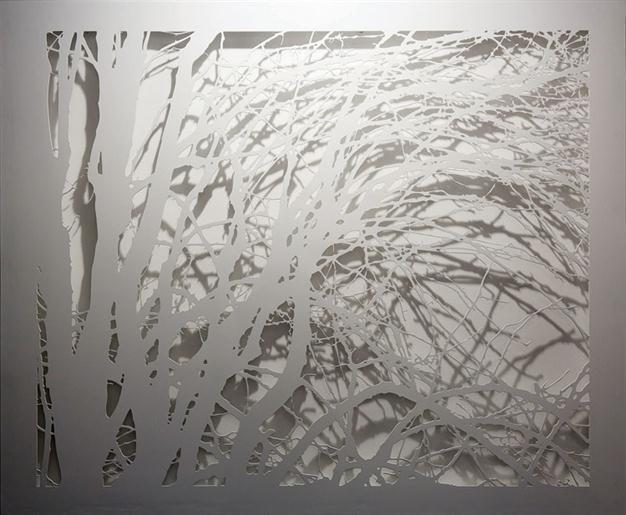‘Artificially Flavored’ artworks define purity
ISTANBUL- Hürriyet Daily News

Young artist Can Ertaş’s three-dimensional figurative works pose the question ‘What is painting?’ He refers to the industrial process of creation in his exhibition.
Showcasing a minimalist style, artist
Can Ertaş’s solo exhibition, “Artificially Flavored,” is displaying a number of figurative works that pose the question, “What is a painting?”
Ertaş chose to focus on the idea of “painting” and avoid connecting a certain figure and painting together. “My works do not depict a story and do not show a figure,” he told the Hürriyet Daily News, adding that he tried to stay away from connecting his works to certain figures.
His paintings and works do not aim to remind the viewer of anything. By doing this, Ertaş frees the viewer, allowing him or her to think about what they want to think.
“Is artistic production possible by taking its source of inspiration from the production itself? The basis of my works started to take shape in concert with this question,” he said.
While looking at his works, the viewer does not have to be reminded of anything or find any kind of hidden meaning since everything is crystal clear.
“When thinking about how one can produce art without giving any reference to a being excluding itself, I began to challenge my visual memory ‘pollution,’ as well as reflect on what an image-object as a non-illustration of any being is. In this context, I tended toward the question, “What is it like to be a non-illustration of any being?” he said.
‘Directing viewers to another platform’The paintings can direct the viewer to another platform, according to Ertaş. However, Ertaş’s extremely plain and abstract works consist of some basic geometric forms, as well as some structures that he encounters in his daily life.
“The main issue in my works is about what these works are and how we should see/read them,” he said.
Ertaş’s plain and geometric works tell a lot about artistic production. The artist indicates a problem not only concerning his works but the whole artistic production.
“Therefore, we can transform the former expression into the following question: How shall we read an artwork? It is certainly not possible to answer this question from a single point of view, but I can make a statement about my production as follows: None of the works that you see in this exhibition is anything else than itself,” Ertaş said.
“There is no other and more qualified semantic construction lying behind the surface or form. And even if they connote something for you, none of them is anything else than an object – some of them three-dimensional and some of them applied on surface – produced with certain industrial techniques,” said Ertaş, adding that these creations presented themselves to the audience solely as works.
A three-dimensional, pure-white work of Ertaş shows a forest and branches of trees. “In these works, I showed trees and a forest, but still it is just a detail of the forest. If I had done a more detailed piece about the forest, then it would have been impossible to reflect the forest and the viewer would understand something else,” he said.
Another work, which shows the surface of a leaf, is another example of Ertaş’s geometric and plain works. This time, Ertaş preferred to use the very close detail of a leaf, making it almost look like the waves of the sea.
The name of the exhibition, “Artificially Flavored,” might look like that it has nothing to do with the concept. However, Ertaş discovers a “natural” concept with his work and refers to the industrial process of creation. The exhibition will continue until Feb. 11 at Sanatorium Gallery.
Istanbul’s Sanatorium,
